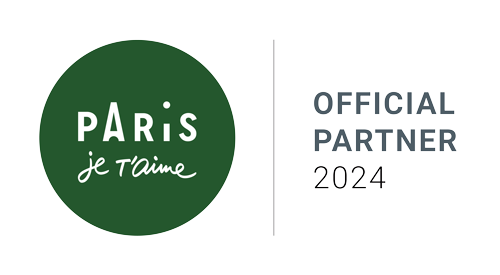Burgundy: a country of medieval heritage and vineyards
In early September 2019, we went on a trip to Burgundy to get acquainted with this region and its attractions – in this respect we were very much helped by our beautiful guide, with whom we visited Pérouges, Dijon and Beaune.
Let us share our impressions with you!
Let us share our impressions with you!
HOTEL CHATEAU DE CHAILLY -
THE TRUE BURGUNDY IS HERE!
THE TRUE BURGUNDY IS HERE!
Our team stays in a place that provides an opportunity to get to know the traditional Burgundian way of life – the former castle and now hotel Château de Chailly. This historical castle, declared a national monument, is only 30 minutes' drive from Dijon. The château is a 12th century medieval fortress, in the 15th century converted into an elegant Renaissance residence. After extensive restoration work in the 1980s, the castle once again regained its former splendour, becoming one of the most luxurious hotels in Burgundy.
45 rooms are available for guests, including 8 suites. The hotel has two restaurants – gastronomic Armançon and traditional "Rubillon", in a relaxed setting of which simple and light buffet-style meals are served. Surrounding the castle, there are 165 acres of the golf center Golf de Chailly with an 18-hole course designed in 1989 by the golf champions of France.
The hotel features an outdoor heated swimming pool, tennis court, steam bath with jacuzzi, wine cellar where wine tastings take place, as well as bar and gaming room. The hotel also offers five rooms equipped for conferences and business seminars of up to 80 guests. Banquet halls can accommodate up to 100 persons – wedding ceremonies are often held here.

The hotel has the so-called "temple of space" – a meditation room, located in a chapel, which is a real work of art. The main idea of this place is to unite people of all faiths.
THE VILLAGE OF PÉROUGES –
LIKE SOMETHING OUT OF A CHARLES PERRAULT FAIRY TALE
LIKE SOMETHING OUT OF A CHARLES PERRAULT FAIRY TALE
Medieval Pérouges, located 30 kilometers from Lyon, is part of the association of the most beautiful villages in France. It was here that the movie "Fanfan La Tulipe" was filmed, starring Gérard Philipe and Gina Lollobrigida, as well as the French version of the "Three Musketeers". It seems that this is what the French hamlet from the fairy tales of Charles Perrault looks like...



An old lime tree, apparently planted before the French revolution, decorates the central area of Pérouges – the tree gave its name to the square (Place du Tilleul).

After a stroll around the village, we head for lunch at the restaurant Hostellerie de Pérouges. Ladies in traditional costumes serve us a local specialty for dessert: Pérouges cake, made of brioche pastry with sugar and butter.
DIJON, THE CAPITAL OF BURGUNDY -
THE TOWN OF AN OWL AND A HUNDRED BELL TOWERS
THE TOWN OF AN OWL AND A HUNDRED BELL TOWERS
King Francis I exclaimed at the sight of Dijon: "What a beautiful town. It is a town of a hundred bell towers!" The city may have lost many of its belfries since then, but Dijon still attracts visitors due to its rich historical heritage and gastronomic delights.



The symbol of Dijon is an owl. A small stone owl carved into a corner of the northern façade of the Notre Dame de Dijon, brings luck to those who touch it with a left hand and make a wish.

Mustard, gingerbread and blackcurrant liquor, the traditional Dijon products, are well known outside Burgundy. Tasting of all these specialties is an essential part of our city tour!

HOSPICES DE BEAUNE - ARCHITECTURAL MASTERPIECE OF THE REGION
The town of Beaune is famous for its key role in the wine production in France – all thanks to the annual wine auction that is held in the Beaune's almshouse with the most recognizable roof in Burgundy. The charitable almshouse Hospices de Beaune was founded in 1443 and until the second half of the 20th century served as a hospital for the poor, existing on the funds of the rich and noble townspeople.


AND OF COURSE, THE VINEYARDS OF BURGUNDY
The wines of Burgundy have become synonymous with the most refined wines. Although the province has only 5 per cent of the French vineyards, it is Burgundy that produces a quarter of all French wines, which are awarded the local "quality mark". During our trip we visit the vineyard Clos de Vougeot Grand Cru – among the admirers of local wines were Stendhal and Nicholas II. Did the monks who laid this vineyard in 1110 ever think that centuries later the wines from the small village of Vougeot would be considered among the best not only in Burgundy, but also worldwide?


